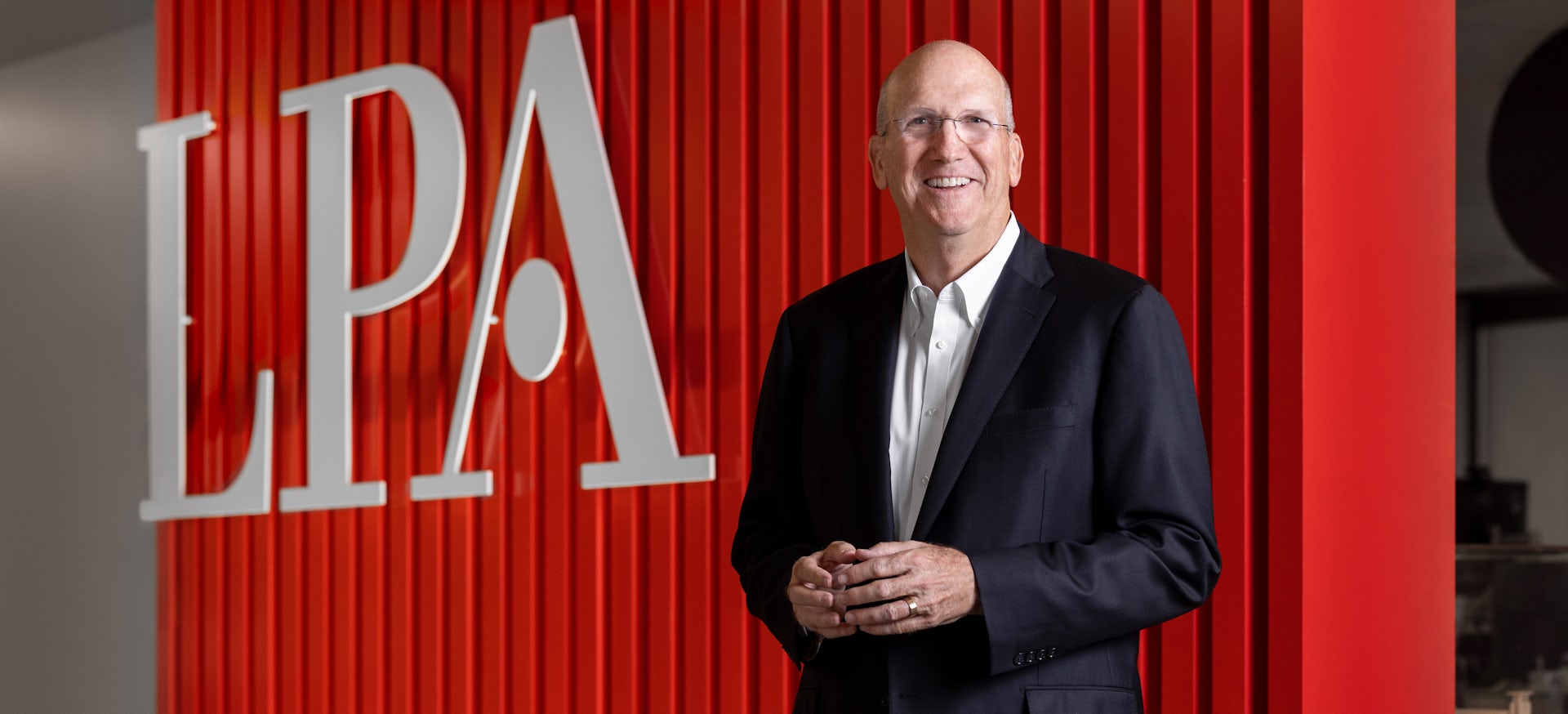Dan Heinfeld FAIA, LEED AP BD+C, President, LPA, Irvine, California
“The more we know the client and the mission of their company, the better the outcome. People, sense of place and culture must be considered for any project to succeed.”
Though Dan Heinfeld knew from a young age that he wanted to become an architect, he couldn’t have known in eighth grade—when he wrote a class paper on the profession—that his career pursuit would not only change his life but also change the design industry itself.
Since taking the helm of LPA as president more than three decades ago, that’s exactly what he has done—building a synergistic relationship between sustainability and design excellence so that, he says, “no building is left behind, regardless of budget or program constraints.”
Indeed, Heinfeld’s passion for sustainability set in well before the term became mainstream. Having lived through the mid-1970s oil embargo on the U.S. by the Organization of Petroleum Exporting Countries, he knew that buildings must be designed to use less energy.
University of Arizona: No Building Left Behind, Dan Heinfeld

When he joined the 10-person firm of LPA in Irvine, California, in 1980 and became its president in 1986, Heinfeld had the opportunity to turn this realization into action. “Very early on we began a conversation about sustainability and tying that to all projects,” he says.
Today, Heinfeld, LPA and its 400 architects, engineers, landscape architects, interior designers and planners are “committed to making sustainability and building performance the foundation of every design, regardless of size, scale or budget.”
Under his leadership, the award-winning firm has built a model for how to implement sustainability based on research and multiple disciplines, “with a collaborative culture focused on analysis and problem-solving on energy use, water use, indoor air environments, embodied carbon and improving the experience for the people who use the spaces,” he says.
The model is working, resulting in measurable outcomes in performance, healthier environments and facilities. For example, for the last two years LPA was the largest firm in the country to surpass the AIA 2030 Commitment target of reducing energy use in their buildings by more than 70%.

The OPEC oil embargo and an early interest in architecture haven’t been the only drivers in Heinfeld’s pursuit of sustainable design, of course.
His family moved to Tucson in 1961 for his father’s health, and though he attended Rincon High School just a couple miles from the University of Arizona, the hometown college wasn’t his first choice. He received a basketball scholarship in San Diego, but after a year realized that architecture was a stronger pull than sports. So he transferred back home and enrolled in the five-year, accredited Bachelor of Architecture program at what is now the College of Architecture, Planning and Landscape Architecture.
At CAPLA, Heinfeld was most influenced by Professor of Architecture W. Kirby Lockard, an internationally recognized architect, planner and professor who gave Heinfeld “two great gifts,” he recalls. “He taught me how to think three dimensionally by drawing and fostered in me a true passion for architecture.”
When he thinks back on his experience as an architecture student, he thinks particularly of the value of time—a concept that becomes almost meaningless, he says, given the amount of time students spend on projects: “I support the rigor of the program, and graduates today come out of school with amazing skill sets. But I question whether the all-nighters we did, and students still do today, are valuable.”
Perhaps if programs had a different attitude toward students’ time, and therefore their value, “the profession would be compensated in a different nature,” he adds. “We get used to spending time, but not being compensated. We’re trained to do it.”

Heinfeld’s advice to students and young architects also centers on the idea of value, and here he offers four recommendations.
First, he says, “be collaborative, because users provide critical feedback and it takes a team to holistically create sustainable buildings and projects that are restorative, carbon neutral and net-zero.”
Second, when interviewing, take the time to learn about the firm you interview with. “Do your research and make sure you fit the firm,” he says.
Third, and similarly, “find an organization that does the work that you are drawn to. This will allow you to be passionate about what you can contribute.”
Finally, Heinfeld recognizes that in architecture school there is a significant focus on design studio. “But ask yourself if you’re learning everything you need in addition to design,” he advises. “If you’re not a strong designer, you still have value—and options. After all, design projects begin with contracts and include construction administration.”
As for his own favorite design projects in his many years at LPA, “it’s always the current one I’m working on,” he says. “The more we know the client and the mission of their company, the better the outcome. People, sense of place and culture must be considered for any project to succeed.”














